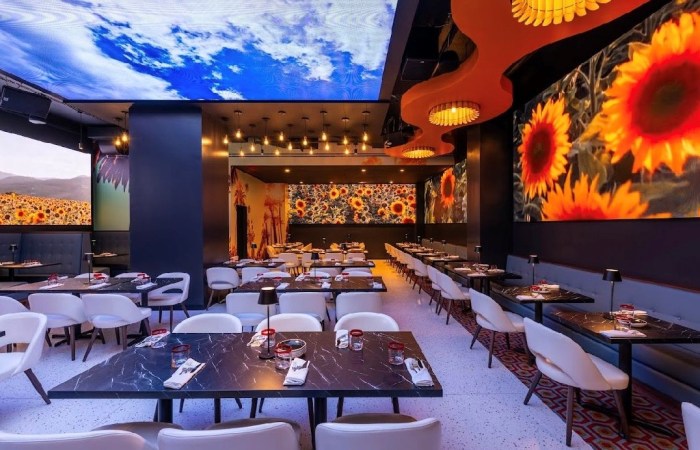It likely wouldn’t faze most “Blue Bloods” viewers if Det. Danny Reagan turned his weapon on a perp and yelled, “NYPD, freeze!” To those who know better, however, the series’ credibility would be in question.
“From day one in the academy until you retire, it’s drilled into you when you go to take out your gun, you yell, ‘POLICE, DON’T MOVE,’” retired Officer Jim Nuciforo demonstrates at an above-average volume.
Nuciforo, a 34-year veteran of the NYPD, has been working behind the scenes since before the Brooklyn-shot series premiered nine years ago to ensure the police representation remains accurate. In the role of the show’s police consultant, he’s slipping his own real-life stories into scripts, teaching actors how to handle a firearm and showing them safe ways to interact with suspects.
“They have to get it right. I think that’s important,” he says. And he’s not the only one.
The city’s NYPD Movie/TV Unit, a sector comprising 26 officers working in collaboration with the Mayor’s Office of Media and Entertainment, can also be found on set checking props and helping a scene come to life safely.
“Some actors approach us. Even big names do it. They’ll ask, ‘Is it true that a detective would talk to a lieutenant this way?’ ” Lt. Noe Campos, of the Movie/TV Unit, says. “We don’t take an active role on the set, but we answer them honestly. The New York City Police Department is the greatest in the world, so we want it presented right.”
When replicating the NYPD on-screen, it all comes down to the look and feel of the props and actors’ mannerisms. Are the patrol vehicles and uniforms stitch-for-stitch replicas of the real deals? Are the characters’ actions on par with reality?
In the case of “Blue Bloods,” the answers are yes and yes.
The NYPD logo
Using the NYPD’s logo on-screen requires proper licensing, which series such as “Blue Bloods” are encouraged to purchase through the department’s production partnership with NYC & Co. It’s an arrangement that produces a “stream” of revenue to New York City.
“I’m a little selfish. I want to see all the production business come to New York because the money that’s generated through the production industry is money that goes out to social services here in the city,” Campos says. “It helps out our schools, it keeps our taxes down. Helps keep our streets clean. This is all money funneled back to the community.”
“Blue Bloods” has such licensing, so everything you see on-screen is as identical to the real thing as possible.
Since the cars and uniforms are realistic, officers are required on set to make sure the public doesn’t unintentionally approach an actor for help. Up to six officers and 20 traffic agents can be assigned to a shoot, depending on the size and scale of the project, according to Campos.
“The vehicles are right on the money. They look the same, but the sirens are added in post,” Nuciforo, 57, explains. “On the inside, they don’t have all the computers the NYPD has, but you’d never know just looking from the outside.”
One specific detail does help officers distinguish between a prop vehicle and a patrol car: the license plate number.
“They can’t use any number of an active precinct,” Campos, 49, says. “They use, say, 55 or 12; numbers of precincts that don’t really exist.”
It’s Campos’ job to make sure these “picture cars,” as the NYPD calls them, don’t leave active set parameters. “If they do, the numbers get covered up because it can be confusing not only for the public but for other officers.”
The same goes for the uniforms. Even the series’ police commissioner, played by Tom Selleck, would be required to fully remove or cover up his uniform before slipping offset for a cup of coffee.
Firearms
It’s a rite of passage on the “Blue Bloods” set to visit a shooting range with Nuciforo to learn how to properly hold and fire a police revolver. Everyone except Selleck has taken the trip.
“He probably can handle a weapon better than I can,” Nuciforo says of the “Magnum P.I.” alum.
Nuciforo says he puts those getting their hands on a gun for the first time through the same training he received in the police academy in 1982.
“I have to show a lot of the actors and stunt officers that in the NYPD, you never, ever, ever have your finger on that trigger until the second you are going to shoot that weapon,” he explains. “That’s a big no-no. If it ever happened, I’d get a call the night the episode airs from other cops.”
On the production level, working officers will remain present to personally check every weapon before the prop crew hands it off to an actor.
“Sometimes, people can’t find something fake and someone proposes to use the real thing and we have to make sure that doesn’t happen,” Campos says.
Scripted stunts
The NYPD has its own specific regulations on how to carry, and in what circumstance it’s acceptable to use, a firearm. So, Nuciforo says he checks the scripts to make sure character reaction matches suspect action.
“The writers will call and say, ‘Did anything like this happen to you?’ ” Nuciforo says, noting that the crew often, but not always, takes his advice. “But they are always, always interested in the reality of it.”
On the day of a shoot, Nuciforo will join the cast, production crew, writers and stunt actors for a private rehearsal to map how an active pursuit and arrest scene will play out.
“They’ll block the scene and after that, even though I’ve already read [the script], something might pop in my head where I didn’t envision it playing out that way.” He’ll share stories from his years on the force to suggest how a suspect and officer would typically engage.
ON TV: “Blue Bloods” airs Fridays at 10 p.m. on CBS.































